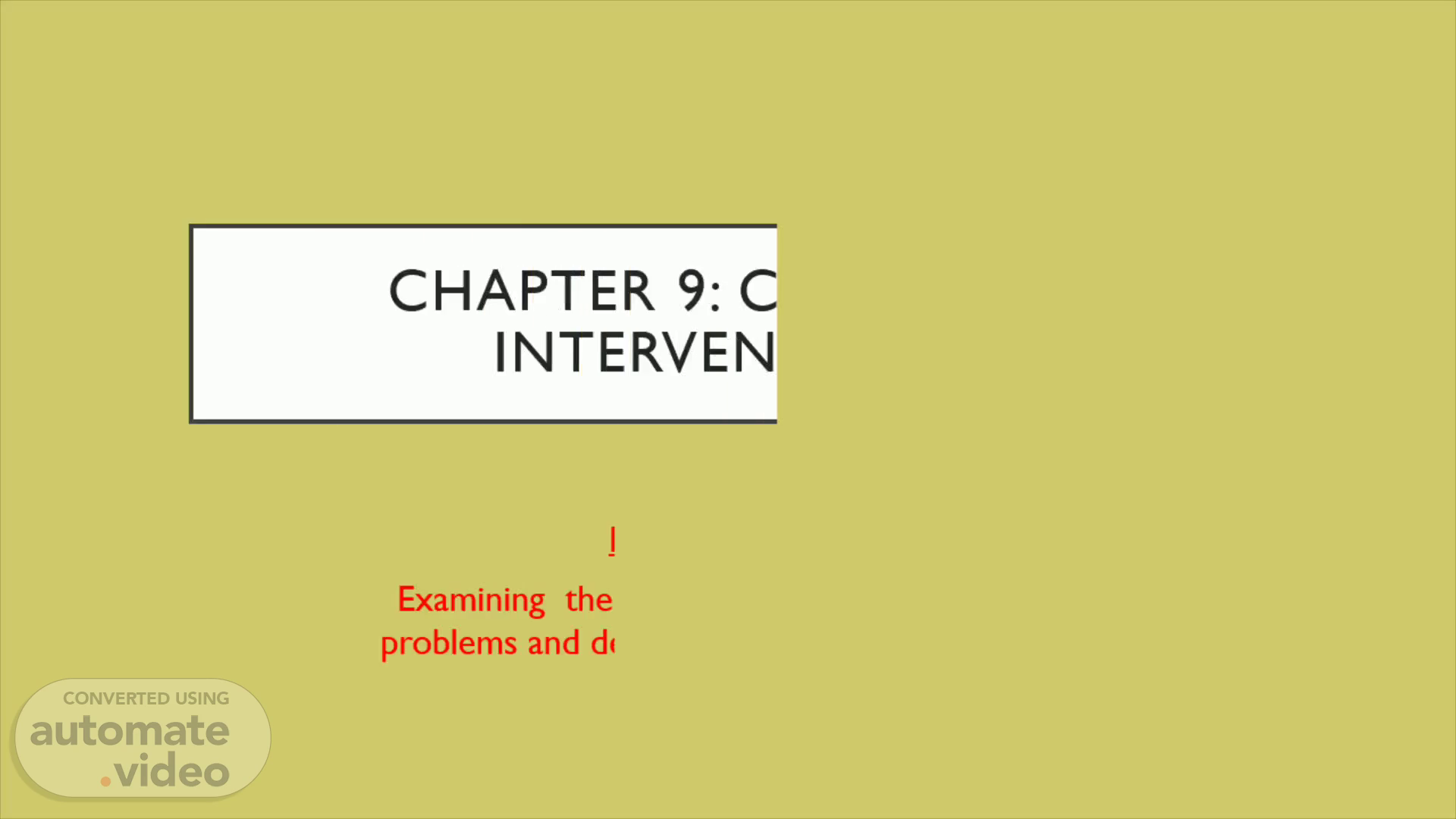
Chapter 9: Cognitive Interventions
Scene 1 (0s)
Chapter 9: Cognitive Interventions. Point of the chapter: Examining the ways clients think themselves into problems and describe interventions to reverse the situation.
Scene 2 (10s)
Cognitive interventions. Theoretical Perspective: Faulty thinking produces distressing emotions + problematic behavior Applies to anxiety reduction, stress management, anger control, depression, phobic disorders and sexual dysfunction. ‘’Think through problems’’ CBT, REBT, Cognitive Therapy, Transactional Analysis, etc. Goals of Cognitive interventions: Reduce emotional distress Reduce maladaptive behavior patterns Altering errors in thought perceptions and beliefs.
Scene 3 (29s)
Assessment of cognitive problems. Begin with the assumption that people construct reality based on childhood experiences, personal and cultural beliefs Assessment = searching for flaws in thinking and perception Core Beliefs: Deeply engrained beliefs. EX: ‘’I’m not lovable’’ ‘’I’m not good with people’’ Intermediate Beliefs: Attitudes, rules and assumptions that solidify a core belief Core: I am not good in social situations Invitation (event) Intermediate Beliefs: “It’s embarrassing to be at a loss with others,” (attitude) “It’s best to avoid social contact” (rule) “If I try to interact with others, I’ll make a fool of myself” (assumption) I am…. Others are… The world is… Beliefs are often outside of a person’s awareness. Automatic thought: what is conscious. EX: Belief: ‘’I’m not good with people.’’ Automatic thought: ‘’ I won’t go to the party’’ Reaction: Feeling – relief so behavior to avoid is reinforced, etc..
Scene 4 (1m 6s)
Interventions:. A-B-C-D Analysis: A: Activating event: an unfortunate situation or person in client’s life, often the reason the client seeks counseling B: Belief System: Identify rational beliefs and irrational beliefs C: Consequence: Identify the client’s reactions and emotions produced by the activating event. Be alert to affect words and body cues D: Disputation: challenge the conclusions the client has come to Cognitive Disputation: -Making use of persuasion and direct questions and logical reasoning to dispute irrational beliefs ‘’Is that not true? Why not?’’ ‘’Is that very good proof?’’ “If a friend held that (self-defeating) idea, would you accept it?” ”What would that men about you as a person?”.
Scene 5 (1m 36s)
Interventions. Imaginal Disputation: Relies on client imagery and (REI) rational-emotive imagery. Based on the belief that emotional consequences of imagery stimuli are similar to those produced by real stimuli. Clients imagine themselves in the problematic situation and behave differently Countering Interventions: Clients are asked to identify counterarguments for each of their irrational beliefs “I am a failure if my client chooses to stop therapy.” – “My client’s choice regarding therapy is not a reflection of my success as a counselor.”.
Scene 6 (1m 59s)
Interventions. Decibels Intervention: (Desensitizing Irrational Beliefs) Clients are asked to spend 10 minutes a day asking themselves the following 5 questions: 1: What irrational belief do I want to reduce? 2: What evidence exists for the falseness of this belief? 3: What evidence exists for the truth of the belief? 4: What are the worst things that could actually happen if I don’t get what I think I must? 5: What good things could I make happen if I don’t get what I think I must? (Might be more effective if client introduces a positive reinforcement activity following this activity) Injunctions and Re-decision Work: (from Transactional Analysis) Becoming aware of the injunctions (damaging phrases) taught by parents that the client has accepted as a child, and decide if they are going to continue living by them “Always do the best you can do” versus “Don’t be who you are” or “don’t fail” or “don’t be successful”.
Scene 7 (2m 35s)
Interventions. Cognitive Restructuring: (aka Cognitive Replacement) Used when there is a singular issue that needs to be focused on Exploring a client’s typical thoughts in a troublesome situation Substituting irrational thoughts with countering thoughts (coping thoughts) “I am afraid of this airplane” versus “This airplane has been inspected by a specialist in aviation safety" Anchoring Anchors: signals that the counselor + client agree on that alert the client to an impending and undesirable response. Physical, External or Internal. Reframing Redefining the problem, thought stopping, positive self-talk.
Scene 8 (2m 58s)
Second order interventions - “Turn logic on its head”.